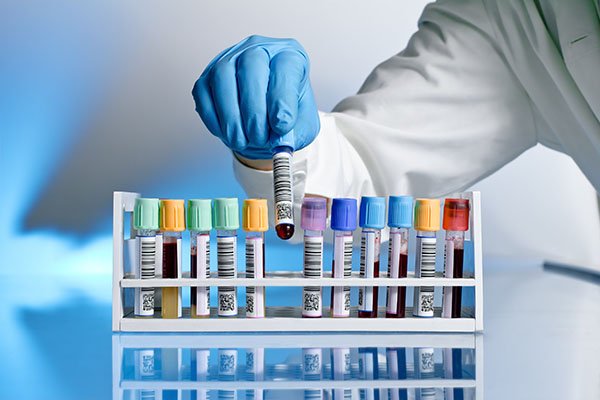Challenges and Opportunities of Wearable Devices in Hospital Supply and Equipment Management
Summary
- Hospitals in the United States face several challenges in implementing and maintaining wearable devices for nursing care.
- Issues such as cost, data security, interoperability, and staff training are significant barriers to the adoption of wearable devices in healthcare settings.
- Despite these challenges, the utilization of wearable devices in nursing care offers numerous benefits, including improved patient outcomes and increased efficiency.
Introduction
Wearable devices are becoming increasingly common in healthcare settings, offering nurses and other healthcare professionals new tools to monitor patients, access information, and improve care delivery. However, hospitals in the United States face several challenges when it comes to implementing and maintaining these devices for nursing care. In this article, we will explore the obstacles and opportunities associated with wearable devices in hospital supply and equipment management.
Challenges in Implementing Wearable Devices
Cost
One of the primary challenges hospitals face in implementing wearable devices for nursing care is the cost associated with acquiring and maintaining these devices. Wearable technology can be expensive, especially when considering the need for multiple devices for each nurse and the infrastructure required to support their use. Hospitals must weigh the benefits of wearable devices against the financial investment required to implement them.
Data Security
Another significant challenge hospitals face is the issue of data security. Wearable devices collect sensitive patient information, including vital signs, medication schedules, and other health-related data. Ensuring the security and privacy of this data is critical to compliance with healthcare Regulations and protecting Patient Confidentiality. Hospitals must implement robust cybersecurity measures to safeguard patient information and prevent unauthorized access to wearable device data.
Interoperability
Interoperability is another key challenge hospitals encounter when implementing wearable devices for nursing care. Many wearable devices operate on different platforms and may not be compatible with existing hospital information systems. Ensuring that wearable devices can seamlessly integrate with Electronic Health Records and other healthcare technologies is essential for maximizing their effectiveness and usability. Hospitals must prioritize interoperability when selecting wearable devices to ensure a smooth implementation process.
Staff Training
Staff training presents another obstacle to the successful implementation of wearable devices in nursing care. Healthcare professionals must be properly trained on how to use wearable devices effectively, interpret the data they provide, and integrate this information into their care delivery processes. Providing comprehensive training programs for nurses and other staff members is essential for maximizing the benefits of wearable devices and promoting their adoption in healthcare settings.
Benefits of Implementing Wearable Devices
Improved Patient Outcomes
Despite the challenges associated with implementing wearable devices in nursing care, the utilization of these devices offers numerous benefits for patients. Wearable devices can provide real-time monitoring of vital signs, medication adherence, and other health-related parameters, enabling nurses to detect early warning signs of deterioration and intervene promptly. This proactive approach to patient care can lead to improved outcomes, reduced hospital readmissions, and enhanced patient safety.
Increased Efficiency
Wearable devices can also improve the efficiency of nursing care delivery by streamlining communication, automating data collection, and enabling remote monitoring of patients. Nurses can access patient information quickly and easily using wearable devices, reducing the time spent on administrative tasks and allowing more time to focus on direct patient care. By enhancing Workflow efficiency and coordination among healthcare team members, wearable devices can help hospitals optimize resource allocation and improve overall care quality.
Enhanced Communication and Collaboration
Another benefit of implementing wearable devices in nursing care is the opportunity to enhance communication and collaboration among healthcare professionals. Wearable devices enable nurses to share real-time data, collaborate on patient care plans, and communicate effectively with other team members. This seamless exchange of information can improve care coordination, reduce medical errors, and enhance the overall patient experience. By fostering a culture of collaboration and teamwork, wearable devices can transform the way healthcare is delivered in hospital settings.
Conclusion
While hospitals in the United States face several challenges in implementing and maintaining wearable devices for nursing care, the benefits of utilizing these devices far outweigh the obstacles. By addressing issues such as cost, data security, interoperability, and staff training, hospitals can maximize the potential of wearable devices to improve patient outcomes, increase efficiency, and enhance communication and collaboration among healthcare professionals. Moving forward, hospitals must continue to invest in wearable technology and prioritize its integration into their supply and equipment management strategies to drive innovation and excellence in patient care.

Disclaimer: The content provided on this blog is for informational purposes only, reflecting the personal opinions and insights of the author(s) on the topics. The information provided should not be used for diagnosing or treating a health problem or disease, and those seeking personal medical advice should consult with a licensed physician. Always seek the advice of your doctor or other qualified health provider regarding a medical condition. Never disregard professional medical advice or delay in seeking it because of something you have read on this website. If you think you may have a medical emergency, call 911 or go to the nearest emergency room immediately. No physician-patient relationship is created by this web site or its use. No contributors to this web site make any representations, express or implied, with respect to the information provided herein or to its use. While we strive to share accurate and up-to-date information, we cannot guarantee the completeness, reliability, or accuracy of the content. The blog may also include links to external websites and resources for the convenience of our readers. Please note that linking to other sites does not imply endorsement of their content, practices, or services by us. Readers should use their discretion and judgment while exploring any external links and resources mentioned on this blog.
